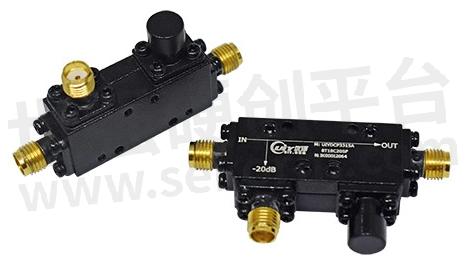Understanding Directional Coupler in Five Minutes

In a microwave system, it is often necessary to divide the microwave power of one channel into several channels in proportion, which involves power distribution issues. The components that realize this function are called power distribution components or couplers, which mainly include: Directional Couplers, power dividers, and various microwave branch devices.
This article mainly introduces the function of the coupler and its common properties.
The directional coupler is a radio frequency device that extracts a small portion of the signal from the main channel of the wireless signal. Like the power divider, it belongs to the power distribution device. The difference is that the coupler is a distribution device of unequal power. When the coupler and the power divider are used together, it is mainly to achieve the goal to distribute the transmission power of the signal source to each antenna port of the indoor distribution system as evenly as possible, so that the transmission power of each antenna port is basically the same.

The power at the input port of an ideal coupler is equal to the sum of the power at the coupled port and the power at the output port, in watts (W), that is:

The important parameters of the coupler are coupling degree and insertion loss.
The coupling degree is the ratio of the power of the coupled port to the input port, expressed in dB, it is generally a negative value. The larger the absolute value of the coupling degree is, the smaller the insertion loss is.
Insertion loss is the ratio of the power at the output port to the input port. The greater the absolute value of the coupling degree, the smaller the absolute value of the insertion loss.
Expressed in dB, there is the following relationship:

The relationship between insertion loss (dB) and coupling degree (dB) of a coupler can be expressed as:

- +1 Like
- Add to Favorites
Recommend
- The AGH University Publishes on Innovative Circuits Designed with UMS GaAs PH25 Process
- Ryzen Direct Die Frames V2: How the DDF is made
- Solutions for 40G QSFP+DAC/AOC Direct Connection Cable
- Smiths Interconnect Has Extended Its Broad Range of Coaxial Coupler Components in UHF to Ku-Band
- What Is the Difference between 100G Active Optical Cable and 100G Direct Attach Cable?
- AC-DC Power Supply: Efficiently Converting Alternating Current to Direct Current
- AC-DC Converter: Converting Alternating to Direct Current
- Installation of UIY Surface Mounting Isolator/Circulator
This document is provided by Sekorm Platform for VIP exclusive service. The copyright is owned by Sekorm. Without authorization, any medias, websites or individual are not allowed to reprint. When authorizing the reprint, the link of www.sekorm.com must be indicated.


























































































































































































































































































































































































































































































































































































































































































































































































































































































